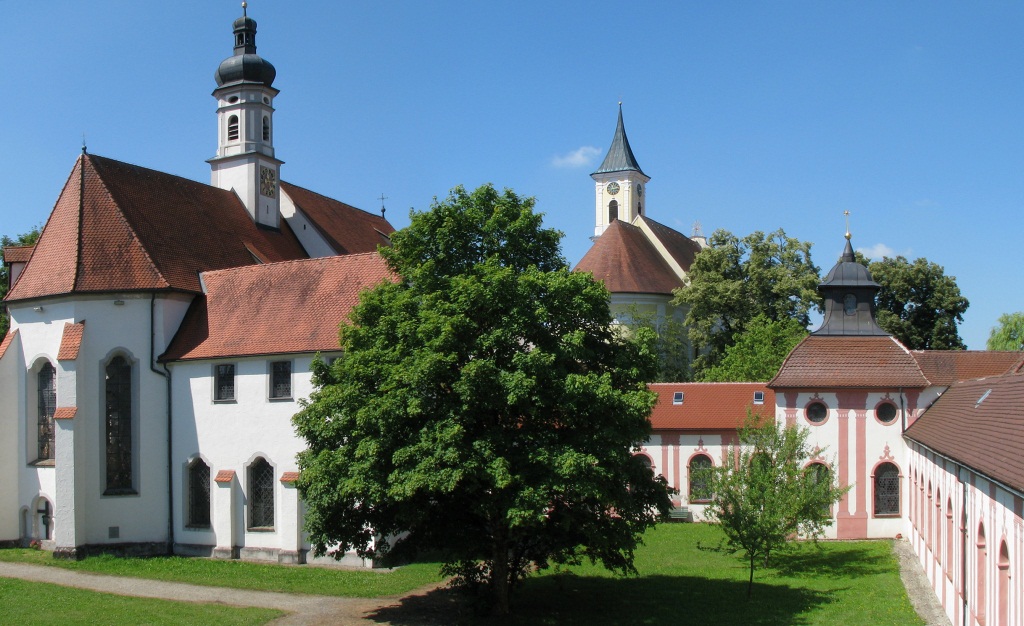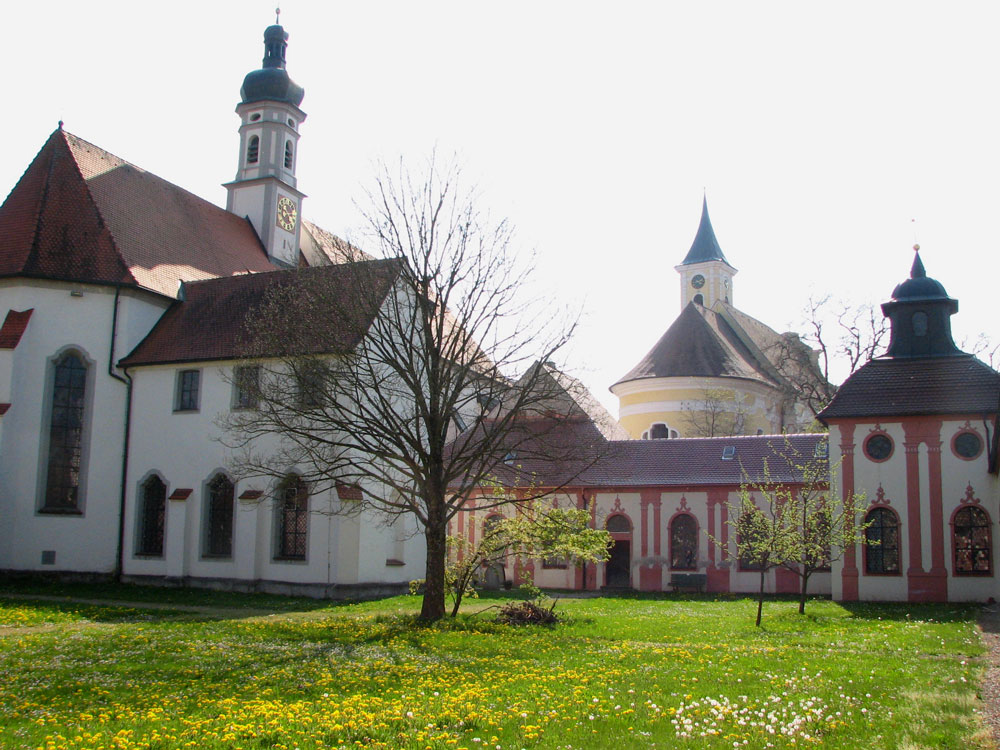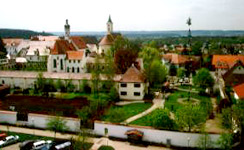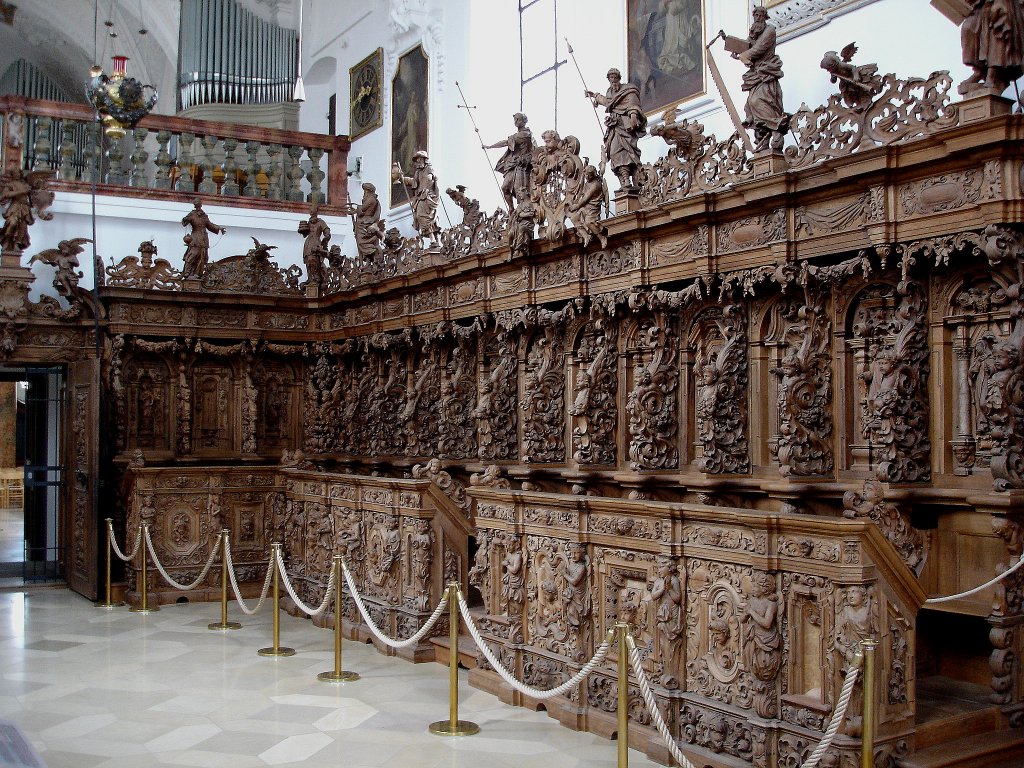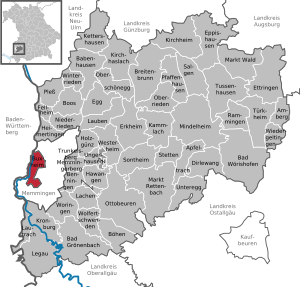Buxheim
Buxheim is a community in the Upper Bavarian district of Eichstätt.
- 4.1 municipal
- 4.2 Mayor
- 5.1 Structures
- 5.2 monuments
Location
Buxheim lies on the southern Franconian Altmühltal Nature Park in the district of Eichstätt, about eight kilometers west of Ingolstadt.
Expansion of the municipal district
The municipality comprises the district Buxheim with the municipal seat and the parish of Buxheim as well as the individual farms Moosbauer, Moss Mill, Hessenhof and Reinbold mill and the district Tauberfeld with the Kirchdorf Tauberfeld.
Neighboring communities
Buxheim is bordered on the northeast by the municipality Hitzhofen, in the east on the community Eitensheim, in the southeast on the market Gaimersheim, to the south by the district-free city of Ingolstadt, on the west by the market Nassenfels and to the northwest by the municipality Adelschlag.
History of Buxheim
In the hallway Sandbuck the place Mesolithic finds have been made . West of Buxheim a Roman settlement has been demonstrated.
Pussenesheim, a eichstättisch - episcopal Grange is first mentioned in a document dated 5 February 908, and probably belonged to the basic equipment of the resulting 745 Diocese of Eichstätt. For 1179, the place is shown as the property of Eichstätt Cathedral Chapter, confirmed in a document by Pope Alexander III. Beginning of the 12th century, the place was called by Bishop Eberhard in a barter Puhsenshaim. By the middle of the 13th century there was a local nobility; appears 1204 Sifrid of Bussensheim in a document. The Bishop of Eichstätt Conrad II of Pfeffenhausen awarded - 1305 was the place to the dispute over the Jelenia Góra heritage - the gender of the Eichstätter protective stewards had died out with Gebhard VII of Hirschberg.
In the Thirty Years' War, the village was destroyed and then rebuilt. In other wars Buxheim was plundered in 1641 and 1704.
Buxheim was increased on 1 April 1971 by the Municipality Tauberfeld. On the occasion of the district reform, which came into force on 1 July 1972 joined the Central Franconian district of Eichstätt with Buxheim in the administrative district of Upper Bavaria. In the predominantly agricultural -oriented place, there were 1983 inhabitants in 1752 41 Full employment and 28 part-time farms.
See also: list of architectural monuments in Buxheim (Upper Bavaria)
History of Tauberfeld
In the village, located about two kilometers north of Buxheim, 15 grave mounds from the Hallstatt period have been found.
1144 Before the ministerial Ulrich von Hitzhofen ( Udalrich de Hutteshoven ) gave his estate Tauberfeld to the Benedictine monastery of St. Walburg in Eichstätt to secure the livelihood of his daughter and nun Irmengard. In the 11th century a nobleman of Tuberuelt is detected. 1142-1277 there was a Tauber fields local nobility, whose castle, if it existed, has not been found. 1179, Pope Alexander III. the cathedral chapter Eichstätter the possession of the Grange. 1239 had the Augustinian Canons Rebdorf here goods. In the debate about the Jelenia Góra heritage, the place was awarded to the Bishopric of Eichstätt.
In 1870 the city following the railway line Ingolstadt - Treuchtlingen. On 1 April 1971 Tauberfeld was incorporated into Buxheim. The predominantly rural farming town had 1983 inhabitants in 678 40 Full- Acquisition and nine part-time farms.
In Tauberfeld there was a hamlet Mossolteshule, mentioned in 1142, which has gone off.
Policy
Parish council
The local council of Buxheim has 16 members.
- CSU: 6 seats
- SPD: 3 seats
- CDU: 5 seats
- ODP: 2 seats
(As at municipal election on March 2, 2008)
Mayor
Mayor since the September 21, 1999 Peter Doliwa of the outdoors voters.
Culture and sights
Structures
The Catholic parish church of St. Michael in the center of Buxheim was built in 1911 by the Munich architect Hans Schurr in neo-baroque forms. Conserves the stately tower of the 1629 built earlier church originates in the core of the years around 1340 and whose upper floors were probably built in the 17th century according to the plans of Eichstätt court architect Jakob Engel Giovanni Battista Camesina; 1735 the dome was repaired. Include in-room amenities alongside the early classicist altars ( around 1780, the figures probably by Joseph Anton Breitenauer ) Baroque pulpit ( around 1670 /80), a Schnitzfigurengruppe of Saint Anne with Mary ( 1520 ) and two paintings from the secularized convent of Notre-Dame in Eichstätt by Josef Anton Glanschnig (designated 1736). The adjacent rectory dates back to the 17th century, the Benefiziatenhaus from the second half of the 18th century.
It was until around the year 1919/20, a brewery in fürstbischöflichem possession in the center of Buxheim. These included a brewery, several barns and agricultural property, as well as large-scale land ownership. In 1918 the brewery was sold into private hands and broken at 1919/20. Last brewery owner was Otto Schanz. The prince-bishop's coat of arms stone that was placed over the archway of the brewery building, is considered as the last remnant of the brewery and found its existence in the new building of the local council, is let into the north wall, above the main entrance. The coat of arms bears the inscription: Joannes Anton DG Episcopus et Imperii 5 R. princeps Eystetensis and is provided with the year 1729.
In the hamlet of Tauberfeld a church was consecrated in 1182-1189 by the bishop of Eichstätt Otto. Today's Catholic branch church of St. Martin dates from 1629 and was 1947/48 extended by the Munich architect Fritz Haindl to the west and moved the choir there. The extension has a painted coffered ceiling. The Baroque interior has largely been taken down from the previous; the side altars of 1650/60 probably from the monastery Rebdorf. The high altar with the main "St. Martin with the beggar "in the Nazarene style is a work of the late Rococo (1769 ). At a restoration in 1767 was the ceiling painting "St. Martin in Glory " attached with surrounding images. The accompanying medallions were painted before 1928 and 1993 newly painted by Stefano Cafaggi (Italy). The tower with its three medieval bells is in the core. The church features a modern cross of Eichstätt sculptor - artist Raphael Graf.
Monuments
→ List of monuments in Buxheim (Upper Bavaria)
Personalities
- Quirin Schlamp, OSFS, Pastor at St. Jude Thaddeus Church - in the Crimea, Vienna XIX, born June 7, 1918 in Tauberfeld, † February 16, 1962 in Vienna

